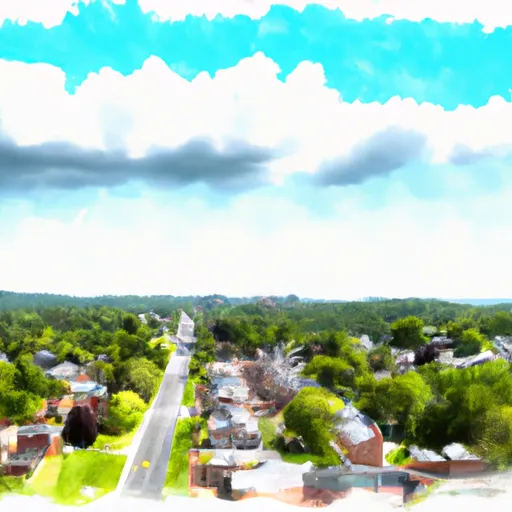-
 Snoflo Premium
Snoflo Premium
Get unlimited access to all our content
With no Ad interruptions! - Start Your Free Trial Login with existing account
Sudlersville
Eden Index
Climate
9.8
•
Recreation
2.8
•
Community
2.0
•
Safeguard
5.4/10

Sudlersville is a small town located in Queen Anne's County, Maryland. The town experiences a humid subtropical climate, characterized by hot and humid summers and mild winters. Average temperatures range from 30°F (-1°C) in winter to 88°F (31°C) in summer. Precipitation is evenly distributed throughout the year, with an average annual rainfall of 40 inches.
Hydrologically, Sudlersville is located near the headwaters of the Chester River, a major tributary of the Chesapeake Bay. The town's proximity to the river offers excellent opportunities for outdoor recreation, including boating, fishing, and kayaking. The river's diverse aquatic ecosystems support a variety of fish species, such as striped bass, blue crabs, and white perch, making it a popular spot among anglers.
In addition to water-based activities, Sudlersville and its surrounding areas offer various outdoor recreation opportunities. Nature enthusiasts can explore the nearby Tuckahoe State Park, which provides hiking trails, picnic areas, and camping facilities. The park's diverse landscapes, including forests, meadows, and wetlands, attract birdwatchers and wildlife observers.
Overall, Sudlersville's climate, hydrology, and outdoor recreation opportunities make it a great destination for individuals seeking to enjoy nature and engage in outdoor activities.
What is the Eden Index?
The Snoflo Eden Index serves as a comprehensive rating system for regions, evaluating their desirability through a holistic assessment of climate health, outdoor recreation opportunities, and natural disaster risk, acknowledging the profound impact of these factors on livability and well-being.
Climate Health Indicator (CHI): 9.8
Sudlersville receives approximately
1149mm of rain per year,
with humidity levels near 77%
and air temperatures averaging around
13°C.
Sudlersville has a plant hardyness factor of
7, meaning
plants and agriculture in this region tend to thrive during the non-winter months.
By considering the ideal temperature range, reliable water supplies, clean air, and stable seasonal rain or snowpacks, the Climate Health Indicator (CHI) underscores the significance of a healthy climate as the foundation for quality living.
A healthy climate is paramount for ensuring a high quality of life and livability in a region, fostering both physical well-being and environmental harmony. This can be characterized by ideal temperatures, reliable access to water supplies, clean air, and consistent seasonal rain or snowpacks.
Weather Forecast
Streamflow Conditions
Upper Chesapeake
Area Rivers
Upper Chesapeake
Snowpack Depths
Upper Chesapeake
Reservoir Storage Capacity
Upper Chesapeake
Groundwater Levels
Recreational Opportunity Index (ROI): 2.8
The Recreational Opportunity Index (ROI) recognizes the value of outdoor recreational options, such as parks, hiking trails, camping sites, and fishing spots, while acknowledging that climate plays a pivotal role in ensuring the comfort and consistency of these experiences.
Access to outdoor recreational opportunities, encompassing activities such as parks, hiking, camping, and fishing, is crucial for overall well-being, and the climate plays a pivotal role in enabling and enhancing these experiences, ensuring that individuals can engage in nature-based activities comfortably and consistently.
Nearby Ski Areas
Catastrophe Safeguard Index (CSI):
The Catastrophe Safeguard Index (CSI) recognizes that natural disaster risk, encompassing floods, fires, hurricanes, and tornadoes, can drastically affect safety and the overall appeal of an area.
The level of natural disaster risk in a region significantly affects safety and the overall livability, with climate change amplifying these risks by potentially increasing the frequency and intensity of events like floods, fires, hurricanes, and tornadoes, thereby posing substantial challenges to community resilience and well-being.
Community Resilience Indicator (CRI): 2.0
The Community Resilience Indicator (CRI) recognizes that education, healthcare, and socioeconomics are crucial to the well-being of a region. The CRI acknowledges the profound impact of these elements on residents' overall quality of life. By evaluating educational resources, healthcare accessibility, and economic inclusivity, the index captures the essential aspects that contribute to a thriving community, fostering resident satisfaction, equity, and social cohesion.

